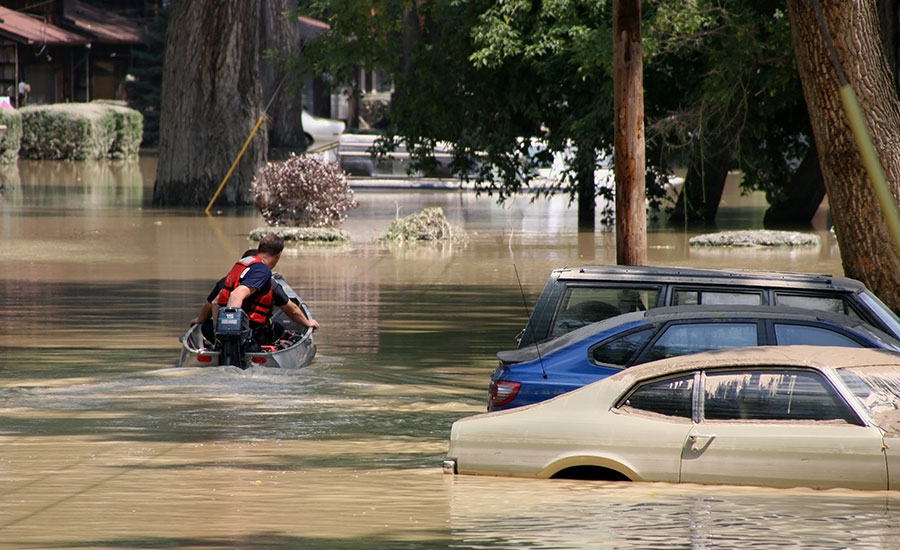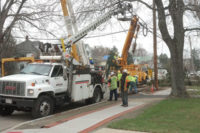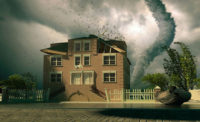Report says NYCHA Unprepared for Next Superstorm Sandy

Three years after Hurricane Sandy stranded 80,000 public housing tenants, the NYC Housing Authority is "woefully unprepared" for the next disaster.
Controller Scott Stringer said that auditors discovered project managers did not have accurate emergency information regarding 80% of tenants who use wheelchairs or need oxygen tanks.
This was a huge post-Sandy problem when thousands of NYCHA tenants in Lower Manhattan, Brooklyn and Queens were trapped in upper floors in the dark, without heat, waiting for weeks for the Authority to restore power. Dozens were disabled and had to be rescued by EMTs, said the New York Daily News.
"The Authority has failed to learn from its botched response to the 2012 disaster," said Stringer, who released his report at a press conference outside the Smith Houses in Lower Manhattan, a development that was overwhelmed by the storm surge and left in the dark for weeks.
The audit found:
• A random examination of 483 tenant files for residents listed as "disabled" found 80% of the emergency contact information was inaccurate, while another 10 files were missing all contact information. "In the event of an emergency NYCHA would not be able to rely on (the tenant database) to identify every disabled tenant," the report warned. "NYCHA's failure to maintain accurate and complete information about its disabled residents can have a negative impact on them during emergencies, a time when they may have the greatest need of assistance."
• NYCHA claimed they tallied information about disabled tenants after Hurricane Sandy, scanned it all and sent it to the Authority's emergency services unit. But Stringer says his auditors were unable to find any of this scanned information.
• Development managers also failed to track lists of tenants who are blind, deaf, rely on walkers or canes, or have mental disabilities, the audit states.
• NYCHA lost track of its generators. NYCHA "has plenty of generators, but their central office doesn't have any idea where they are," the report states. Property managers said that generators "are often borrowed or loaned to other developments when there is a need." An internal post-Sandy assessment by NYCHA found "locating and tracking some of NYCHA's equipment and parts was difficult." At one development, the superintendent said a generator had been stolen "before it had even been removed from the wrappings."
• Emergency drills were confusing to tenants and "unhelpful." NYCHA held only a few drills in a handful of locations — and zero drills in three-fourths of their projects.
• Surveying 13 developments Stringer found property managers weren't clear on who was in charge. Some said the project superintendent was in charge, at others the property manager said it was their job. One property manager reported showing up at her development, before she was authorized to do so, to assess the damage immediately after Sandy, while another reported she didn't show up for two weeks because "she had her own difficulties."
•Since 2005 the city has required that all city agencies be part of an Incident Command System to function as a uniform chain of command and track what all agencies are doing. As of this week, NYCHA is still not part of that. Two NYCHA borough office directors explained that the ICS system's paperwork "is too cumbersome for most of these situations."
However, NYCHA spokeswoman Jean Weinberg blasted Stringer’s audit as “yet another example of the Comptroller cherry picking data and shifting timelines to paint an outdated picture of NYCHA.”
“With the new year, we hope the Comptroller's office will seek an elevated and more productive discourse with NYCHA — a partnership that helps unearth real issues where they exist — like our collaborations on improving inventory controls,” she said. “Unfortunately, this audit was a missed opportunity to advance NYCHA's efforts to become a more transparent and accountable landlord for our residents and the public.”
Looking for a reprint of this article?
From high-res PDFs to custom plaques, order your copy today!






